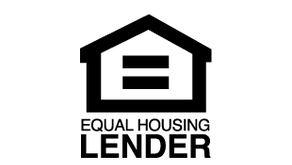No one plans to fail. But that’s what defaulting on your mortgage means: failure to pay.  Most times it’s something unplanned like a layoff, cut back hours at work or an illness that leads to people finding themselves in hot water with their mortgage lender. Though it’s a difficult place to be in, you must address the problem right away. Once a mortgage is in default, it can lead to a costly foreclosure that will ruin your credit and end with you losing your home. However, if you familiarize yourself with the events of a foreclosure, doing so can give you a better understanding of how it can be avoided and what you can do to mitigate the fallout of failing to make on-time payments.
Most times it’s something unplanned like a layoff, cut back hours at work or an illness that leads to people finding themselves in hot water with their mortgage lender. Though it’s a difficult place to be in, you must address the problem right away. Once a mortgage is in default, it can lead to a costly foreclosure that will ruin your credit and end with you losing your home. However, if you familiarize yourself with the events of a foreclosure, doing so can give you a better understanding of how it can be avoided and what you can do to mitigate the fallout of failing to make on-time payments.
Pre-Foreclosure
Mortgage lenders typically grant a 15-day grace period to allow payments to arrive. However, after 30 days without paying, you will receive correspondence from your lender letting you know that you are in default. From that point, things can begin to deteriorate quickly. The lender’s late notice marks the beginning of what is called pre-foreclosure, and they usually report the default to the major credit bureaus at that time. If you continue to miss more payments, your name may be given to a collection agency that will begin calling and writing letters demanding payment. Along with sending official notices, it is also common for lenders to charge late fees for missed payments during this time.
Foreclosure
If the payments continue to go unmade, the lender will begin moving closer to foreclosure. More fees will begin to pile up as the lender demands that you pay for the attorney fees and house inspections associated with the preparation to sell. They may also demand payment for repairs or upkeep if the house has not been kept in good condition. Eventually, if no action is taken to pay the back-payments and fees incurred, the lender can put your house up for public auction. Once sold, you will be evicted. At this point, not only have you lost your home, the foreclosure will remain on your credit score for seven years making it difficult to get another home loan.
How to Avoid Pre-Foreclosure
Losing your home and being evicted seems unthinkable but it happens frequently. 
First, don’t make the mistake of simply paying late. Getting your payment in the mail and postmarked on the day the mortgage is due is often considered late. Being a few days late might not get you reported to the credit bureaus but could land you with late fees. Give plenty of time to allow your payment to be delivered and processed before the due date. Also, if you think you are going to have trouble coming up with the money for the payment, just know that partial payments are typically not counted as being on time and are only held by the lender while they wait for the remainder of the payment to arrive. If possible, save ahead of time and keep a rainy-day fund that can help get you through any financial upsets.
How to Stop Foreclosure
If the reason your payments are late is because you are having financial hardship, the most important thing to do is to work with the lender right away. Between the time you miss your first payment and losing your home, there are many opportunities for you to regain your standing.
For starters, if you communicate your situation to the lender up front, they may waive your late fees, or they may work out a payment plan with you to help bring you current. Also, if you can prove that you are keeping the house in good condition, they may waive the home inspections and associated fees. A renegotiation of your loan might also be possible during this time. Finding out what kinds of programs you could be eligible for to help reduce your interest rate and lower your monthly payments is crucial. The most important thing is to seek help right away. Don’t try to fight the problem by yourself.
To see what options you have for refinancing your home loan, reach out to one of the mortgage consultants at A and N Mortgage by filling out the online mortgage application and choose “Refinance” in the “Type of Loan” dropdown menu. Or you can speak with an A and N Mortgage consultant in person at (773) 305-LOAN.






